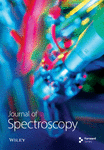The application of pattern recognition techniques in metabolite fingerprinting of six different Phyllanthus spp.
Abstract
FTIR spectroscopy was used together with multivariate analysis to distinguish six different species of Phyllanthus. Among these species P. niruri, P. debilis and P. urinaria are morphologically similar whereas P. acidus, P. emblica and P. myrtifolius are different. The FTIR spectrometer was used to obtain the mid-infrared spectra of the dried powdered leaves in the region of 400–4000 cm−1. The region of 400–2000 cm−1 was analyzed with four different pattern recognition methods. Initially, principal component analysis (PCA) was used to reduce the spectra to six principal components and these variables were used for linear discriminant analysis (LDA). The second technique used LDA on most discriminating wavenumber variables as searched by genetic algorithm using canonical variate approach for either 30 or 60 generations. SIMCA, which consisted of constructing an enclosure for each species using separate principal component models, was the third technique. Finally, multi-layer neural network with batch mode of backpropagation learning was used to classify the samples. The best results were obtained with GA of 60 gens. When LDA was run with the six wavenumbers chosen (1151, 1578, 1134, 609, 876 and 1227), 100% of the calibration spectra and 96.3% of the validation spectra were correctly assigned.




